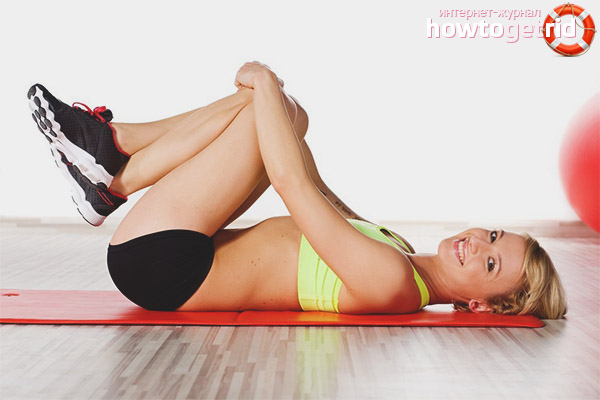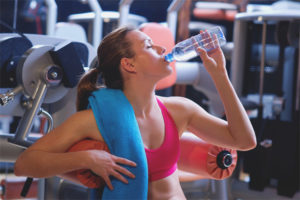The content of the article
During pregnancy, the figure of each woman undergoes serious changes. Therefore, most young mothers immediately after the birth of the baby begin to think about activities that will help to quickly restore their previous physical shape. Given the general awareness, many women out of all known effective remedies choose exercises for the abdomen. After all, it is this area after childbirth that becomes the most problematic, since stretch marks and fatty deposits appear on the stomach.
Of course, any young lady is upset by only one appearance, to put it mildly, of a sagging tummy. Therefore, wanting to correct this defect, women who gave birth choose the correct, in their opinion, option - download the press. Let's try to analyze all the pros and cons of this method, and also dwell on alternative methods of restoring the figure.
Postpartum Exercise
To begin with, all methods for strengthening the muscles of the abdominal wall are aimed at a specific area - the abdomen. But during the period of carrying the baby, not only this part of the body changes, but also the hips become fuller, the waist line loses its clear shape, the buttocks become not so elastic. In a word, the silhouette of a young mother differs from those forms that a woman had before pregnancy. Therefore, in such a situation, pumping one press is a waste of time.
To tighten all muscle groups will require a complex physical activity, including aerobics, dancing, running, swimming and other types of sports. But even physical efforts alone are not enough to bring the body shape to the normal state after childbirth. During this period, the emphasis is on proper nutrition, good rest, a positive emotional attitude is important. And another very significant moment is the time when you can safely expose the body to physical stress.
Press after childbirth: choosing a convenient time for classes
I immediately want to note that it is very reasonable to approach such an important issue as physical activity in the postpartum period. It is best to consult a doctor about this. A specialist will help you choose the best option for risk-based training, give useful tips.
Now, regarding the time when you can safely start your studies. Of course, immediately after giving birth, you should not plan such a serious load. It is necessary to wait until the body grows stronger, and the uterus takes its usual size. In addition, the process of childbearing in each woman passes with its own characteristics, which can also lengthen the recovery period after childbirth. But in general, if the natural birth took place without complications, then the young mother can take up her figure in two months. If the delivery was operative, that is, a cesarean section was done, then this period increases to 10-12 weeks.
Precautionary measures
Most often, in the postpartum period with excessive physical exertion, uterine bleeding begins. An equally dangerous consequence of physical activity is the displacement or omission of internal organs. These are very serious complications that can cause tremendous harm to a woman’s health.That's why you need to dose the load, and it is best to get recommendations on this issue from the gynecologist.
As a rule, women after childbirth are first recommended to perform the Kegel exercise (a special simple complex for strengthening the muscles of the pelvic floor), and only then they are allowed to swing the press. Another precaution is the bandage. This device supports the abdominal wall and will help prevent displacement of internal organs.
During classes, a woman should assess her condition. If you feel worse, you should stop exercising immediately.
How to download the press
Abdominal muscle strengthening exercises should be approached in the same way as sports training. There are special rules for women in the postpartum period:
- You can do it only in the absence of contraindications, but not earlier than 1.5 months after the birth of the baby.
- In the process of training you need to listen to the body: if there are pains, dizziness, discomfort in the lower abdomen, you must immediately stop training.
- Training can begin when all the stitches have completely healed. If uterine discharge is noted, you need to wait a bit with classes.
- In order for the exercises to be as effective as possible, you need to keep your belly drawn in.
- Training should begin with static exercises, gradually increasing the intensity of classes. It should be remembered that the load should not be greater than before pregnancy.
- Women who underwent cesarean section or had complications during labor, need a special complex.
- With diastasis (divergence of the abdominal muscles) of the 1st degree, exercises can only be performed with a special corset. If a woman has grade 3 diastasis, she is generally contraindicated in pumping the abs.
- When the body adapts to the loads, you can perform exercises daily. It is advisable to train at the same time.
- Before the main set of exercises, you should always do a warm-up (jumping, squats, walking in place). Finish the workout with an exercise in stretching the muscles.
- During classes, you need to monitor your breathing.
- The exercises to strengthen the press are performed in several approaches, between which pauses should be made in 2-3 minutes.
A few effective exercises for the press
Four simple exercises, which are described below, will help to quickly restore the figure of harmony and fit after childbirth.
- “Bicycle” - this is a well-known exercise that you can perform lying on your back at an arbitrary pace.
- Kneeling, you have to perform legs swings back.
- In a prone position (on your back) alternately raise your legs at a right angle.
- In the same position, you need to bend your legs, and at the same time put your hands behind your neck. Then slowly, but at the same time, raise your head and legs, and then lower them.
How do workouts affect lactation
Many mothers, because of fears of a decrease in lactation, do not dare to start exercises to strengthen the abdominal muscles in the first months after childbirth. And indeed, such a risk exists, because with excessively intense loads, the production of breast milk can decline. High loads negatively affect the taste of breast milk. This is explained by the fact that intensive training helps increase the level of acid in the blood, and this, in turn, affects the taste of milk. True, all these training costs are already an hour after class. Therefore, if you follow the water balance, physical exercises will not affect lactation.
Video: how to clean the stomach after childbirth











Submit